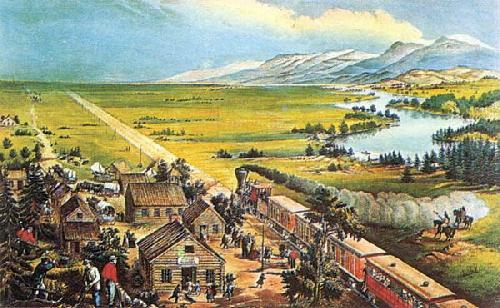Frank Tenney Johnson (1974 – 1939)
During his lifetime Johnson travelled west from New York a lot to gather materials
for his paintings, also did a lot of travelling south west to paint Native
Americans. He lived in Alhambra, California from 1920 and spent a lot of his
time painting near Yellowstone National Park.
This was painted by Frank Tenney Johnson in 1931, and is
entitled Moonlit Canyon. This image
was painted after the exploration of the west, yet it still portrays the west
as being wild. The two men on horseback are at a cross roads in the canyon,
with the path ahead cast in shadows. This shows that the idea of the west being
unknown and wild is still present even in 1931. The image is of an area that
could not be reached by larger means of transport, meaning that the only ways
to explore this area is by foot or horseback which gives it a secretive
feeling. It suggests that areas of the west are still untouched by more modern
things, such as modern cars.
The longer hair of the men suggest that they are Native
Americans as short hair was preferred by American men at the time. The fact
that these men may be Native American gives the impression that the idea of the
wild and the Native Americans have a connection, as if Native Americans have not
been touched by modern times either.
The towering cannon in the background gives the impression
of the vastness of the wilderness, which is exaggerated by the size comparison created
by the men being present in the picture. The fact that this image was painted
at night gives a secretive feeling to the image, as well as a feeling of the
area being untouched by the noise and colour of 1930’s America.


